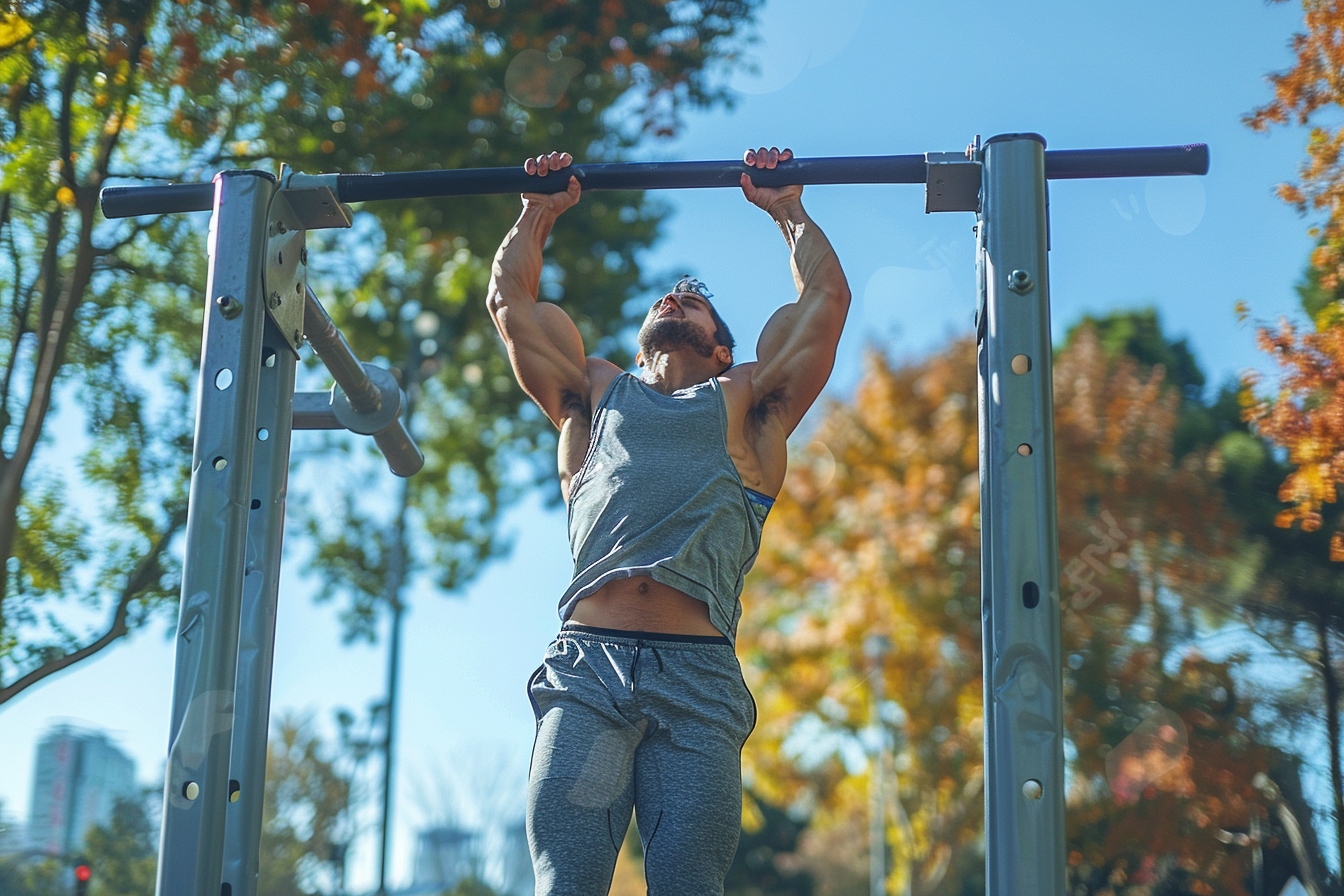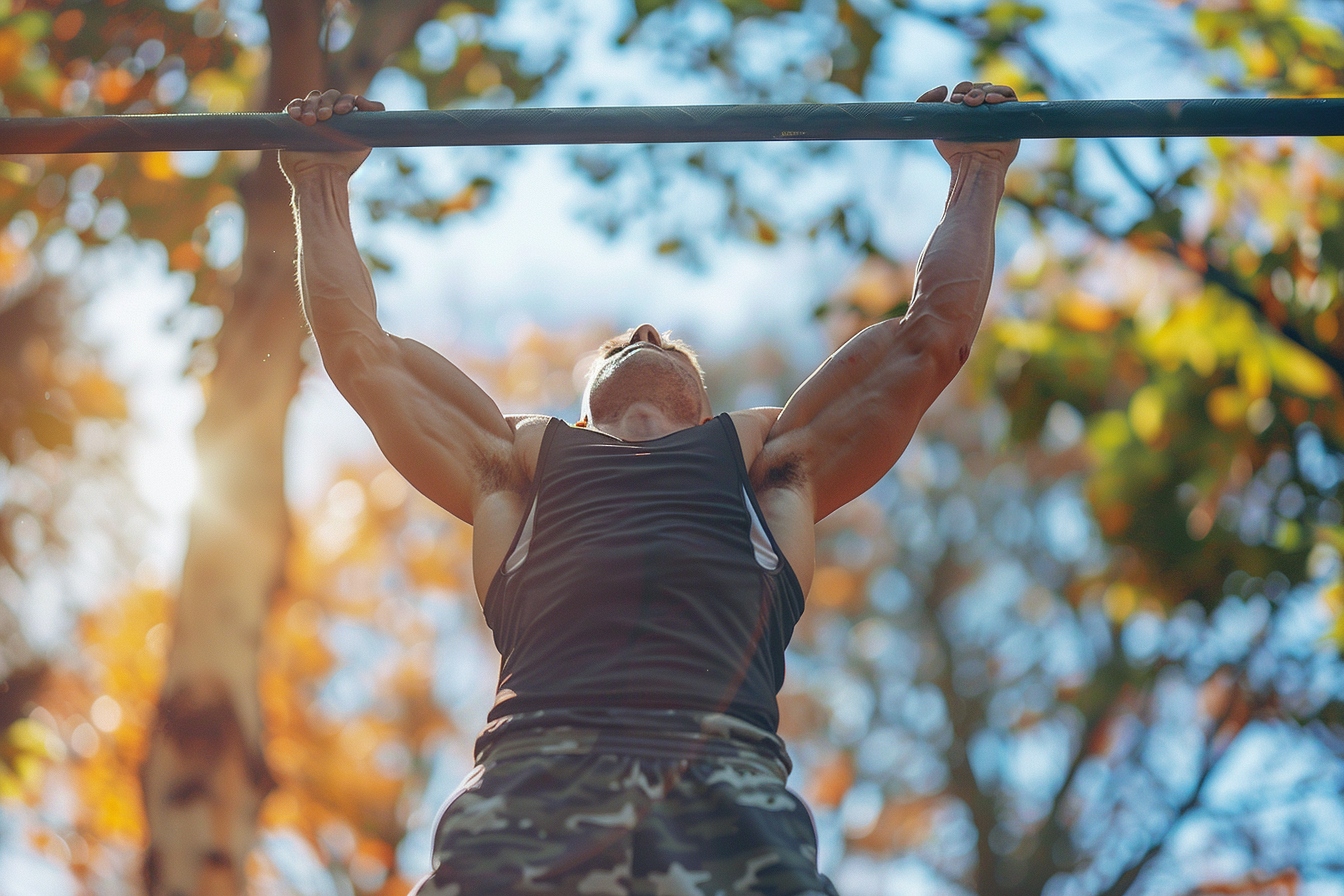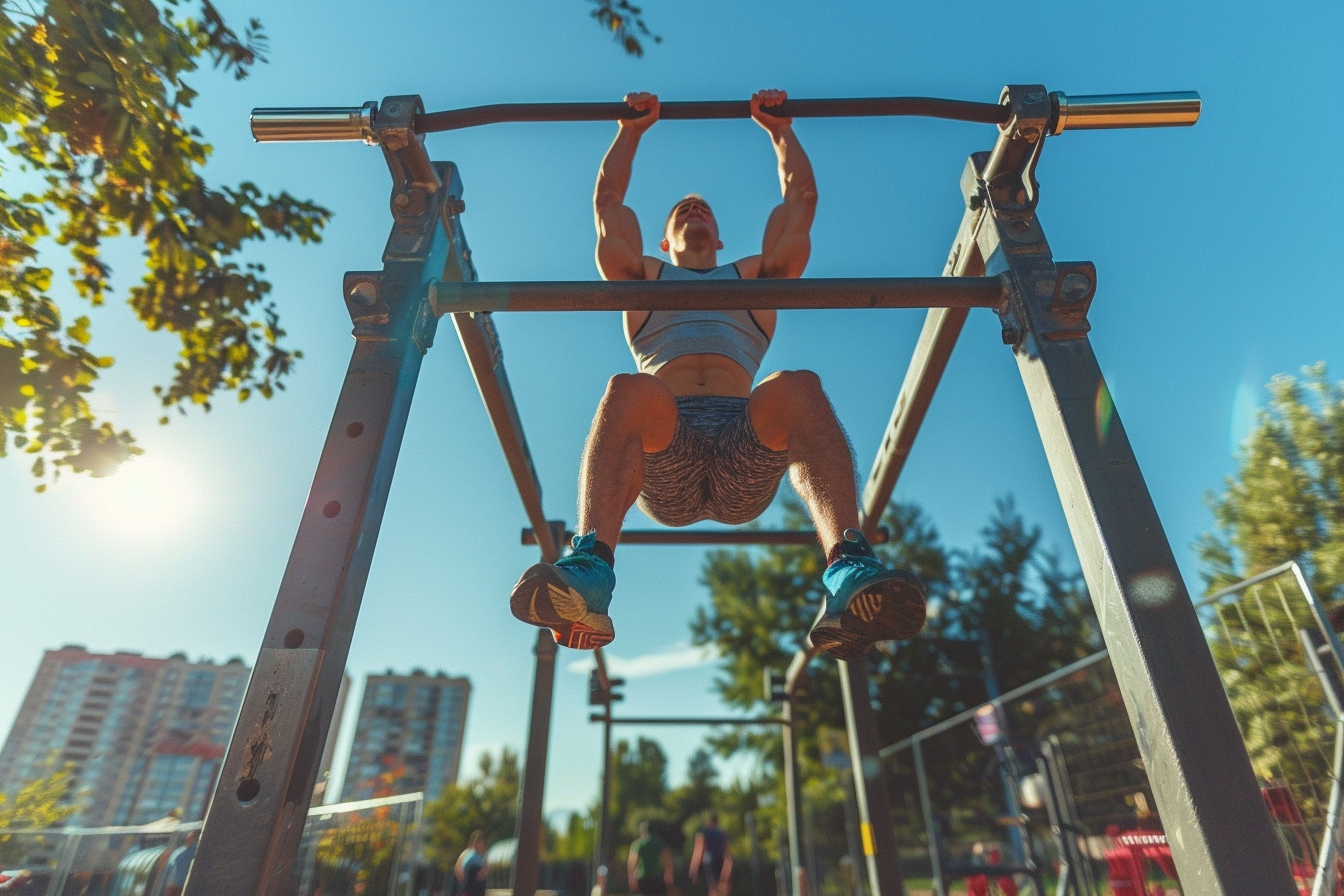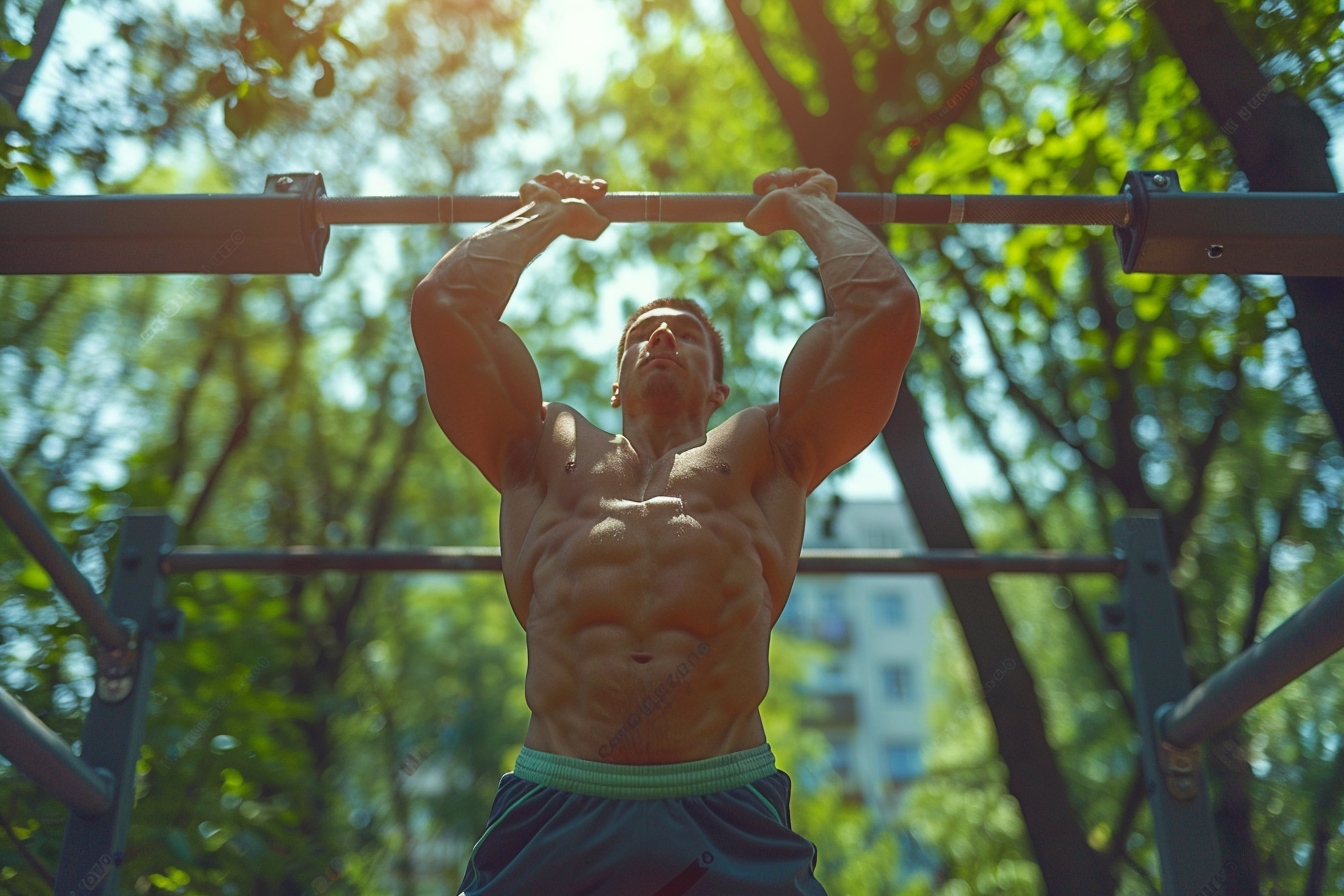If you’re looking to sculpt your body, increase your strength, and improve your overall health, incorporating pull-up bar exercises into your workout routine could be the solution you’ve been waiting for. Indeed, these exercises, true gems of muscle strengthening, offer a range of benefits for the entire upper body musculature.
The Importance of the pull-up bar in muscle strengthening

Before diving into the details of the different exercises, let’s understand why the pull-up bar deserves a special place in your strength training routine. Doing pull-up bar exercises engages several muscle groups, including the lats, biceps, triceps, shoulders and even the abdominals. The use of body weight makes these exercises particularly relevant for developing functional strength, essential in everyday life.
Start with the basics: Getting started
To get started, let’s make sure you’re gripping the bar correctly. Two types of grips are generally used: the pronation grip (the palms of the hands facing outwards) and the supination grip (the palms of the hands facing towards you). The position of your hands on the bar will influence the muscles used.
The classic: the overhand pull
The spearhead of pull-up bar exercises, the overhand pull-up is performed by gripping the bar with your hands spread a distance greater than that of your shoulders. Ensure controlled execution:
- Hang from the bar, feet in the air.
- Contract your abs and pull yourself up until your chin is above the bar.
- Slowly lower yourself back to the starting position.
The variation: supination traction
The supination pull, also known as the chin-up, places more emphasis on your biceps. The procedure is similar to the overhand pull but this time your palms will be facing towards you. Make sure your movements are fluid and controlled to maximize the effects of the exercise.
The neutral grip: balance and strength
The neutral grip is done with the hands parallel. It is a good compromise between pronation and supination pull-ups and is often recommended for people with shoulder pain.
For beginners: how to progress on the pull-up bar
 Progressive strengthening
Progressive strengthening
If at first, performing a single pull-up seems like an insurmountable challenge, don’t be discouraged. Several methods exist to help you progress. Resistance bands can be used to lighten your weight and help you perform your pull-ups. Alternatively, assisted pull-up machines are a great way for beginners to improve their strength before progressing to the free bar.
Focus on form
It’s tempting to want to quickly increase the number of pull-ups while sacrificing technique. Resist this impulse. A well-executed movement with full range is infinitely more beneficial than a series of quick, jerky pull-ups.
A workout entirely dedicated to the pull-up bar?
Diversify to better progress
The key to progress is variety. Vary the types of grips, hand spacings and your pace to stimulate different muscle groups and avoid progression plateaus. Here are some variations to enrich your routine:
- Traction with wide gauge
- Commando pull-up (alternating your head on each side of the bar)
- Pulling one arm at a time
- Pull-up with legs raised horizontally (L-sit pull-up) to engage the abdominals
- Butterfly pull-up, popular in crossfit programs.
Increase the intensity of sessions
For those who have already mastered pull-ups, it’s time to increase the intensity. This can be done by adding weight using a weighted vest, a belt with weights or by holding a dumbbell between the feet. Be careful that the extra weight does not compromise the quality of your execution.
Recovery: a significant element
The benefits of rest
Often overlooked, rest is a crucial aspect of muscle development. Your muscles need time to recover and rebuild after exercise. Incorporating rest days into your training schedule is just as important as activity days.
Add-ons to the pull-up bar
Complementary exercises such as push-ups, dips or isolation exercises specific to the biceps and triceps can improve your strength and increase your resistance for more effective pull-up bar sessions.
Analysis of the efficiency of pull-up bar exercises

Effectively strengthening your muscles with the pull-up bar does not only depend on regular practice but also on the way each movement is performed. Make sure to engage all of your muscles by maintaining constant tension throughout the exercise. Another crucial point, breathe correctly by inhaling during the descent and exhaling during the ascent phase.
Latest tips to maximize your sessions
- Warm up properly before starting pull-up bar exercises to avoid injury.
- Stay consistent ; regularity is your best ally to see progress.
- Maintain a balanced diet ; Nutrition plays a fundamental role in muscle building.
- Set goals to measure your progress and stay motivated.
- Take videos of your workouts to analyze your form and technique.
The effectiveness of your pull-up bar training will be reflected in an improvement in your posture, an increase in your strength and a harmonious development of your muscles. Whether you are a beginner or experienced, each session should be approached with rigor and determination. Thus, pull-up bar exercises will not fail to transform your physique by building powerful and aesthetic muscles.












